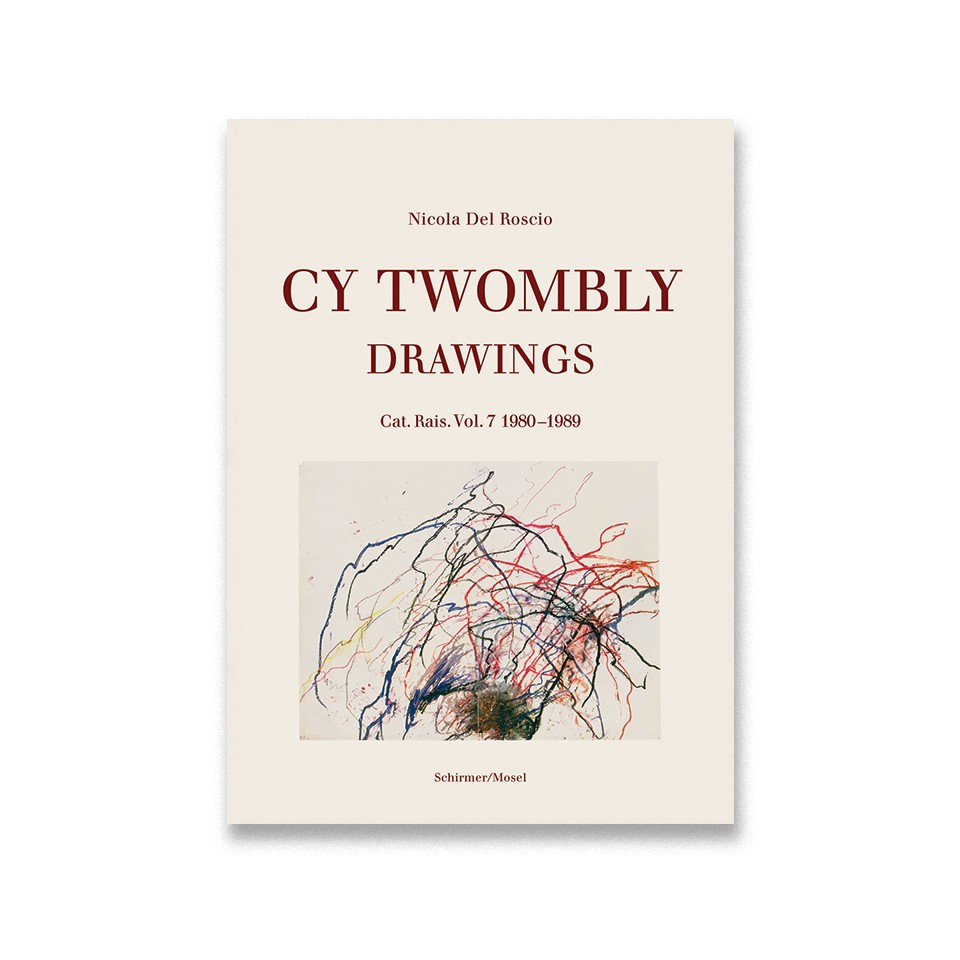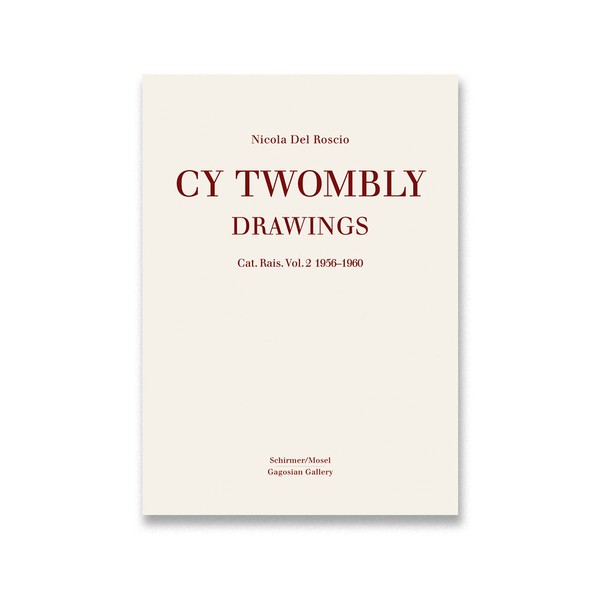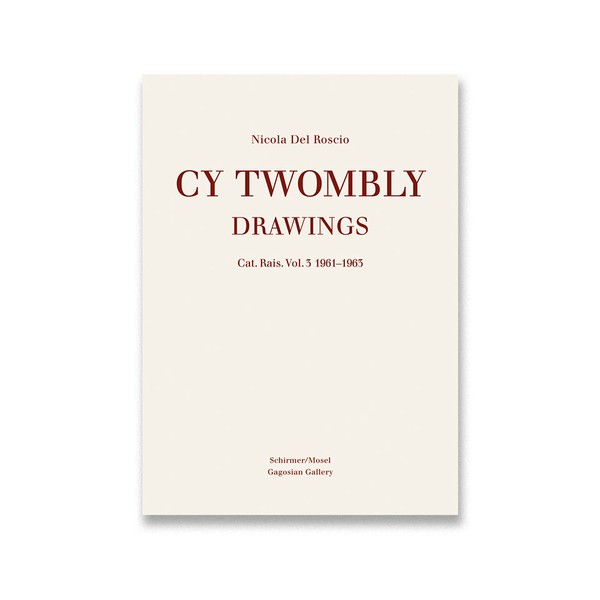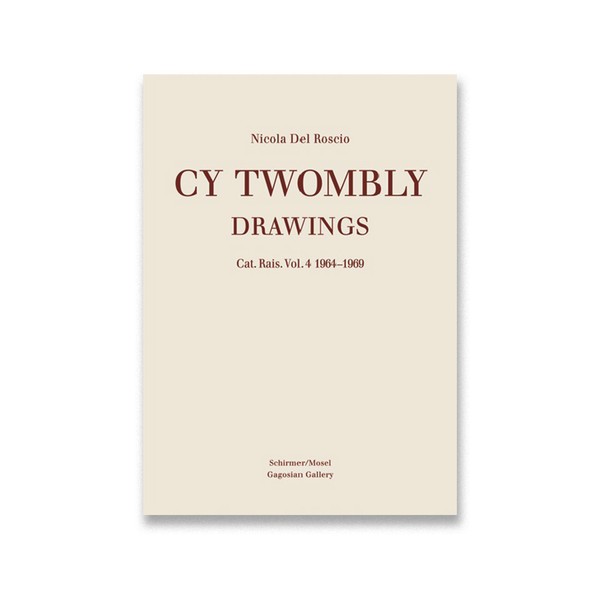Cy Twombly
Catalogue Raisonné of Drawings
Volume 7, 1980–1989

Cy Twombly Catalogue Raisonné of Drawings Vol. 7 catalogues works on paper produced between 1980 and 1989. Nicola Del Roscio’s introductory essay, “Crossing a State of Crisis (and Writing of Hidden Things)” discusses the calibration of emotion in Twombly’s practice and shifts in working practice, including “with bare fingers, applying the paint on paper (and on canvas)” (6). He also discusses various prominent influences on Twombly’s practice in the 1980s, including Jalāl al-Dīn Muḥammad Rūmī, Archilochus, and Rainer Maria Rilke. Anecdotes about interpersonal interactions with figures such as Jasper Johns and Karsten Greve are also included.
Works catalogued here include those produced on Îles des Saintes in the early 1980s, a remarkably formally diverse group with contents ranging from a reproduction of a chicken to a joke about Kazimir Malevich to inscriptions of names of close companions. Multiple series were produced during this period as well, on topics such as Rumī, Suma, Sesostris, Silex scintillans, Ramses, Nike, and Meli. Many of the works from Bassano in Teverina are multipart sets, including on Pan, Leda and the swan, and Narcissus. This set also includes some of the earliest works produced in Gaeta, which later became one of his primary locations, and the adjacent town of Formia. These include the airy Gaeta Sets (1987), his Untitled (Formian Dreams) (1983), and To Sebastiano Conca (1988), as well as a variety of works displaying an emergent fixation on his boat ideogram, which spanned across multiple media synchronously. A substantial number of the works in this period echo the form of the shield in the first panel of Fifty Days at Iliam, Vengeance of Achilles (1978). There are several works dedicated to Arshile Gorky and to Giacomo Leopardi. Well-known series include his Winter’s Passage (Luxor) (1985), Scenes from an Ideal Marriage (1986), Untitled (Odalisca) and Untitled (Toilet of Venere) (1988), and Petals of Fire (1989).
Scholars using this volume as a reference might also find the following literature to be of interest. Cy Twombly: Making Past Present, ed. Christine Kondeleon and Kate Nesin (2020) includes and addresses several of these works, such as Untitled (Odalisca) and Untitled (Toilet of Venere). For Sesostris, see Mary Jacobus, “Time-Lines: Rilke and Twombly on the Nile” (2008); for Archilochus and Rainer Maria Rilke, see her Reading Cy Twombly: Poetry in Paint (2016). Thierry Greub’s Inscriptions (2022) includes more on literary references generally. Dominique Baqué’s Cy Twombly: Sous le signe d’Apollon et de Dionysos (2016) also includes material from this period. There is also an eponymous catalogue for the Gaeta Sets, published by Hine Editions (1987), which includes primarily reproductions rather than text.
(Publication description by Jamie Danis)
Cy Twombly Catalogue Raisonné of Drawings Volume 7 1980–1989. Edited by Nicola Del Roscio. Munich: Schirmer/Mosel, 2017. Fully illustrated. English edition.



